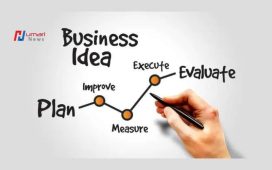From customer demographics to sales trends and operational metrics, data holds the key to unlocking valuable insights that can drive smarter business administration decisions. By harnessing the power of analytics, organizations can gain a competitive edge, optimize processes, and enhance overall performance.
What Is the Role of Data Analytics?
In the realm of business administration, data analytics encompasses a wide range of applications, including financial analysis, market research, customer segmentation, and operational optimization. By leveraging advanced analytical techniques such as predictive modeling, machine learning, and data visualization, organizations can extract actionable insights from their data and drive strategic initiatives.
Improving Decision-Making Processes
One of the primary benefits of data analytics in business administration is its ability to improve decision-making processes. By analyzing historical data and predicting future outcomes, decision-makers can make informed choices that are grounded in evidence rather than intuition or guesswork. Whether it’s identifying market opportunities, allocating resources, or mitigating risks, data-driven decision-making enables organizations to prioritize initiatives that yield the highest return on investment and drive sustainable growth.
Enhancing Operational Efficiency
Data analytics can also enhance operational efficiency by identifying bottlenecks, optimizing workflows, and streamlining processes. By analyzing key performance indicators (KPIs) and operational metrics, businesses can identify areas for improvement and implement targeted interventions to enhance productivity and reduce costs. Whether it’s optimizing supply chain logistics, scheduling workforce shifts, or fine-tuning production processes, data analytics provides valuable insights that enable organizations to operate more efficiently and effectively.
Personalizing Customer Experiences
In an era of hyper-personalization, understanding customer behavior and preferences is essential for driving customer satisfaction and loyalty. Data analytics allows businesses to segment their customer base, analyze purchasing patterns, and personalize marketing campaigns and product offerings to meet the unique needs of individual customers. By leveraging data-driven insights, organizations can deliver targeted messaging, personalized recommendations, and tailored experiences that resonate with their target audience and drive engagement and loyalty.
Mitigating Risks and Identifying Opportunities
By analyzing market trends, competitor activities, and external factors, organizations can anticipate potential threats and proactively mitigate risks before they escalate. Moreover, data analytics enables businesses to identify emerging trends, market opportunities, and untapped customer segments that can drive innovation and growth. Whether it’s entering new markets, launching new products, or adapting to changing consumer preferences, data-driven insights empower organizations to make strategic decisions with confidence.
Leveraging Predictive Analytics for Forecasting
Predictive analytics is a powerful application of data analytics that enables businesses to forecast future outcomes based on historical data and statistical modeling. By leveraging predictive analytics, organizations can anticipate demand, optimize inventory levels, and improve resource planning. Whether it’s predicting sales volumes, forecasting cash flows, or estimating customer churn rates, predictive analytics provides valuable foresight that enables businesses to make proactive decisions and stay ahead of the curve.
Ensuring Data Security and Compliance
As businesses increasingly rely on data analytics to drive decision-making, ensuring data security and compliance is paramount. Organizations must prioritize data protection measures, implement robust cybersecurity protocols, and adhere to regulatory requirements to safeguard sensitive information and maintain customer trust. By adopting best practices for data governance, encryption, and access controls, businesses can mitigate the risk of data breaches and ensure compliance with data privacy regulations such as GDPR and CCPA.
Investing in Data Literacy and Talent
To fully harness the power of data analytics, businesses must invest in building data literacy and talent within their organizations. From executives to frontline employees, everyone should have a basic understanding of data analytics principles and tools. Moreover, organizations should recruit and retain data-driven talent, including data scientists, analysts, and engineers, who can drive innovation and insights through advanced analytics techniques. By fostering a culture of data-driven decision-making and continuous learning, businesses can unlock the full potential of their data assets and drive sustainable growth.
In conclusion, data analytics is a transformative force that empowers businesses to make smarter decisions, enhance operational efficiency, personalize customer experiences, mitigate risks, and identify opportunities for growth. By leveraging advanced analytical techniques and investing in data literacy and talent, organizations can unlock the full potential of their data assets and gain a competitive edge in today’s fast-paced business landscape. As data continues to proliferate and technologies evolve, businesses that embrace data analytics will be better positioned to thrive and succeed in the digital age.







